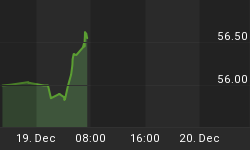There are more substantive fundamental and technical grounds that the recent pullback in equities and global bond yields will extend throughout Q3 to the benefit of the US dollar, which will likely stabilize, rather than wage a rally such as in H2 2008. Current explanations for a stronger dollar in H2 based on US recovery preceding rest-of-world are off the mark. The past 7 years have proven that each time US data emerged on the stronger side, global bourses pushed higher-at the expense of the greenback. While we back the notion for a stronger USD in Q3, our rationale is based on the following:

(i) Necessary pullback in commodities after excessive gains (oil +43%, copper +30% aluminium +22% since late April) started hampering fragile stabilization in business activity;
(ii) Retreat in global risk appetite due to lack of follow-through from econ data and business surveys;
(iii) Reminders from non-US central banks to continue their quantitative easing;
(iv) Cautious currency rhetoric reining in excessive appreciation (SNB, ECB, BoE, BoC and RBNZ);
(v) Rising US and global unemployment rates cannot be dismissed as lagging indicators when their increase (from trough to peak) was among highest in record. In the US, combination of rising unemployment and savings rate do not function well in a debt-laden economy.
(vi) Emerging uncertainty with European stress tests could be deemed as an event-risk excuse for deeper consolidation in the euro.
FX markets have grown increasingly used to watching key parameters of risk appetite, whose upside has become limited at 8,600 in the Dow, 930 in S&500 and 4,350 in the FTSE-100. Key support stand at 8,200, 880 and at 4,100 respectively.
Bond Yields & the Dollar
While bond yields have had their biggest weekly retreat in 3 months, the uptrend since late December is expected to remain intact as long as 3.20% and 2.25% yields hold on the 10 and 5-year treasuries respectively. As the charts above show, we could expect a continuation of the inverse relation between yields and the dollar.
To understand the future, we must understand the past and present relation. Note that between August 08 and March 09, yield and the dollar moved largely in tandem, only for the relationship to turn inverted thereafter as the Feds treasury purchases weighed on the dollar but failed to reverse the yield rally.
Hence, dollar downtrend intensified in March as the Fed's announcement to buy Treasuries implied monetization of the US debt via and increase in and out of the of US dollars. The other reason to the dollar decline was the protracted rally in emerging markets (especially the BRICS), which eroded global fund managers cash, which were largely-denominated in USD.
Meanwhile, bond yields continued to maintain their climb amid the US Treasury's record borrowing and deficit-financing overwhelmed the asset-purchasing efforts of the Fed, hence, caused a drag on treasuries and lifted their yields. Incipent signs of green shoots also boosted yields. In late Q4, we expect to yields resume their upward course as the Treasury's deficit financing combines with improved economic dynamics in and out of the US. And any environment portraying improved global dynamics has consistently proven to be challenging for the dollar.
In response to our reader's requests, the following chart shows gold's year-to-date percentage change in USD, EUR, GBP and JPY terms. Reflecting the yen's broad underperformance, gold has shown the greatest advances against the yen; rising 12% YTD. In contrast, sterling's broad outperformance explains gold's 6% decline YTD against the curency. Improved risk appetite has largely benefited sterling especially as the govt owned UK banks left a void in the bad news medium, allowing sterling to maintain its strong correlation with equity market performance. Fore more historical analysis on gold's muti-currency performance, please review my year-by-year illustrations and rationale from 1999 to 2007 in Chapter 1 of my book Currency Trading & Intermarket Analysis.
















